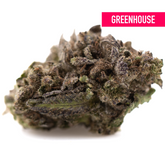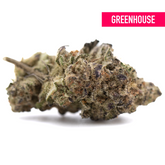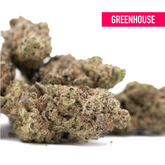THCA vs. Delta 9 THC: Understanding the Legal Loophole
The cannabis industry has undergone dramatic changes since the passage of the 2018 Farm Bill, creating new opportunities and legal complexities that continue to evolve. Among the most intriguing developments is the emergence of THCA (tetrahydrocannabinolic acid) products, which exist in a fascinating legal gray area that has captured the attention of consumers, regulators, and industry professionals alike. Understanding the distinction between THCA and Delta 9 THC is crucial for anyone navigating the modern hemp landscape, whether you're a consumer seeking compliant products or a business owner ensuring regulatory adherence.
What is THCA and How Does It Differ from Delta 9 THC?
THCA, or tetrahydrocannabinolic acid, represents the raw, acidic precursor to the well-known Delta 9 THC that produces the psychoactive effects traditionally associated with cannabis. In its natural state, THCA flower legal products contain this non-psychoactive compound that exists abundantly in fresh, undried cannabis plants. The fundamental difference between these two compounds lies not just in their chemical structure, but in their effects on the human body and their legal classification under federal law.
When comparing THCA vs Delta 9, the most significant distinction is psychoactivity. THCA, in its raw form, does not produce the intoxicating effects that Delta 9 THC is famous for. This is because THCA has a different molecular structure that prevents it from binding effectively to the CB1 receptors in the brain responsible for psychoactive effects. The compound only becomes psychoactive through a process called decarboxylation, which occurs when heat is applied through smoking, vaping, or cooking.
The decarboxylation process removes a carboxyl group from the THCA molecule, transforming it into Delta 9 THC. This chemical transformation is what creates the legal complexity surrounding THCA products. While the raw flower may contain high levels of THCA, it technically remains non-psychoactive until heat is applied, creating a unique position in the regulatory landscape that has allowed for the development of compliant hemp products with significant potency potential.
The 2018 Farm Bill and Its Impact on Hemp Regulation
The Agricultural Improvement Act of 2018, commonly known as the Farm Bill, fundamentally transformed the legal landscape for hemp and hemp-derived products in the United States. This landmark legislation removed hemp from the Controlled Substances Act, defining legal hemp as Cannabis sativa plants containing no more than 0.3% Delta 9 THC on a dry weight basis. This specific definition has created the legal framework that allows THCA flower farm bill compliance to exist in its current form.
The Farm Bill's language is particularly important because it specifically references Delta 9 THC concentration, not total THC or THCA content. This distinction has enabled the production and sale of legal THCA flower products that may contain significant amounts of THCA while maintaining Delta 9 THC levels below the federal threshold. The legislation's focus on Delta 9 THC rather than total potential THC has created what many consider a legal loophole, though others argue it represents the intended scope of hemp regulation.
Understanding this regulatory framework is essential for both consumers and businesses operating in the hemp space. The Farm Bill established hemp as an agricultural commodity, removing many of the restrictions that previously applied to cannabis products. However, it also created a complex regulatory environment where state and federal laws may differ, and where the distinction between legal and illegal products often comes down to precise testing methodologies and molecular structures.
THCA Flower Compliance and Testing Requirements
Ensuring THCA flower compliance requires sophisticated understanding of testing protocols and regulatory requirements that vary between federal and state jurisdictions. The compliance landscape for THCA products is particularly complex because it involves testing for specific cannabinoids while ensuring that total Delta 9 THC content remains within legal limits.
THCA flower testing typically involves several key analytical procedures. High-Performance Liquid Chromatography (HPLC) is the preferred method for testing raw flower because it can measure THCA and Delta 9 THC separately without the heat-induced decarboxylation that occurs with Gas Chromatography (GC) testing. This distinction is crucial because GC testing applies heat during analysis, converting THCA to Delta 9 THC and potentially making compliant products appear non-compliant.
The testing process must account for measurement uncertainty, which is built into federal regulations. The USDA hemp testing guidelines include a measurement of uncertainty calculation that allows for some variance in testing results. This means that products testing slightly above 0.3% Delta 9 THC may still be considered compliant if the measurement uncertainty is factored in, typically allowing for total Delta 9 THC concentrations up to 0.35% or 0.4% depending on the specific testing laboratory's protocols.
Quality control measures extend beyond basic cannabinoid testing to include screening for pesticides, heavy metals, residual solvents, and microbial contaminants. Reputable hemp derived THCA producers implement comprehensive testing protocols that ensure product safety and regulatory compliance across all relevant categories.
Federal vs. State Legal Landscape
The question of THCA flower legality becomes significantly more complex when examining the interaction between federal and state regulations. While the 2018 Farm Bill established federal hemp legality, individual states retain the authority to implement their own hemp programs and regulations, creating a patchwork of different legal frameworks across the country.
At the federal level, federal legal THCA products must comply with the Farm Bill's Delta 9 THC limitation while meeting USDA hemp production guidelines. However, states may implement additional restrictions, testing requirements, or even prohibitions on certain hemp products. Some states have explicitly addressed THCA in their regulations, while others rely on the federal framework or have created their own interpretations of acceptable hemp products.
The complexity increases when considering interstate commerce. Products that are compliant in their state of origin may not meet the requirements of destination states, creating challenges for businesses and consumers alike. This regulatory patchwork has led to the development of products designed to meet the most restrictive common requirements, ensuring broader market accessibility while maintaining compliance.
Law enforcement interpretation adds another layer of complexity to THCA flower regulations. While products may be technically compliant, law enforcement officers may not have the training or equipment necessary to distinguish between legal hemp and illegal cannabis in the field. This has led to situations where legal products are initially treated as controlled substances, requiring court intervention or additional documentation to resolve.
Cultivation Methods and Their Impact on THCA Content
The cultivation environment significantly impacts the final cannabinoid profile of hemp flowers, making growing methodology a crucial factor in compliance and product quality. Indoor THCA flower production offers the highest level of environmental control, allowing cultivators to optimize conditions for specific cannabinoid development while minimizing variables that could affect compliance.
Indoor cultivation provides precise control over lighting schedules, temperature, humidity, and nutrient delivery systems. This controlled environment enables cultivators to maximize THCA production while carefully managing Delta 9 THC development. The ability to maintain consistent environmental conditions throughout the growing cycle results in more predictable cannabinoid profiles and reduced risk of compliance issues due to environmental stress factors.
Outdoor THCA flower cultivation presents different advantages and challenges. While outdoor growing can produce larger yields at lower costs, it introduces variables such as weather fluctuations, seasonal light changes, and potential stress factors that can influence cannabinoid development. Outdoor cultivators must carefully select genetics and growing locations to ensure consistent compliance while dealing with factors beyond their direct control.
Greenhouse THCA flower production represents a middle ground between indoor and outdoor cultivation, combining some environmental control with natural sunlight and potentially lower operational costs. Greenhouse cultivation allows for extended growing seasons and protection from extreme weather while maintaining some of the benefits of natural growing conditions.
The timing of harvest is critical across all cultivation methods. THCA flower cultivation requires careful monitoring of cannabinoid development to ensure harvest occurs when THCA levels are optimized while Delta 9 THC remains within legal limits. This often involves regular testing throughout the flowering cycle and precise timing of harvest operations.
Quality Factors in THCA Flower Production
The production of high-quality THCA flower involves numerous factors that extend beyond simple compliance with legal THC limits. Premium indoor THCA products represent the pinnacle of cultivation excellence, combining optimal growing conditions with superior genetics and meticulous post-harvest processing.
Genetics play a fundamental role in determining the potential cannabinoid profile of any cannabis plant. Cultivators seeking to produce compliant THCA flower must work with strains that have been specifically bred or selected for high THCA production combined with naturally low Delta 9 THC conversion rates. This requires extensive phenotype selection and often involves working with breeders who understand the specific requirements of hemp compliance.
Environmental optimization goes beyond basic compliance to focus on maximizing the quality and potency of the final product. This includes precise control of light spectrums and intensities, optimal temperature and humidity ranges throughout different growth phases, and carefully balanced nutrition programs designed to support maximum cannabinoid production without triggering excessive Delta 9 THC development.
Post-harvest processing significantly impacts the final quality of THCA flower products. Proper drying and curing techniques preserve cannabinoid content while developing optimal flavor and aroma profiles. The curing process must be carefully controlled to prevent decarboxylation that could convert THCA to Delta 9 THC, potentially affecting compliance status.
Quality control extends to packaging and storage conditions that preserve product integrity from harvest to consumer. This includes protection from light, heat, and oxygen exposure that could degrade cannabinoids or trigger unwanted chemical reactions. Professional producers implement comprehensive quality management systems that track products from seed to sale, ensuring consistent quality and regulatory compliance.
Market Dynamics and Consumer Considerations
The THCA flower market has experienced rapid growth as consumers and businesses recognize the unique position these products occupy in the legal cannabis landscape. Understanding market dynamics helps consumers make informed decisions while navigating the complex regulatory environment surrounding these products.
Consumer education plays a crucial role in the responsible use of THCA products. While these products are federally compliant in their raw form, consumers must understand that heating THCA flower through smoking, vaping, or cooking will convert the THCA to psychoactive Delta 9 THC. This means that consumption methods directly impact both the effects experienced and the legal status of the product at the point of use.
The pricing structure for THCA flower often reflects the complexity and costs associated with compliant production. Factors influencing price include cultivation methods, testing requirements, genetic development costs, and the regulatory compliance infrastructure necessary to operate in this space. Premium products command higher prices due to superior genetics, optimal growing conditions, and comprehensive quality control measures.
Distribution channels for THCA products continue to evolve as the regulatory landscape clarifies. Online sales have become increasingly important, allowing producers to reach consumers across state lines while maintaining compliance with applicable regulations. However, payment processing, shipping restrictions, and varying state laws create ongoing challenges for businesses operating in this space.
Future Outlook and Regulatory Evolution
The regulatory landscape surrounding THCA products continues to evolve as lawmakers, regulators, and industry stakeholders gain experience with the practical implications of current hemp legislation. Understanding potential future developments helps consumers and businesses prepare for changing requirements and opportunities.
Federal regulatory agencies continue to develop guidance and enforcement policies related to hemp products. The USDA's hemp production rules have undergone several revisions since the initial implementation, and further refinements are likely as practical experience identifies areas needing clarification or adjustment. The DEA's interpretation of psychoactive compounds and the FDA's approach to hemp-derived products will significantly influence future market conditions.
State-level developments often serve as testing grounds for potential federal policy changes. States that have implemented comprehensive hemp programs provide valuable data on the practical effects of different regulatory approaches. Some states have moved toward more restrictive interpretations of allowable hemp products, while others have embraced the full scope of federal hemp legality.
Industry standardization efforts aim to establish consistent quality and testing standards that could influence future regulatory requirements. Professional organizations and industry groups are developing best practices for cultivation, testing, and marketing that may become the foundation for future regulatory frameworks.
Scientific research into THCA and other cannabinoids continues to expand understanding of these compounds' properties and potential applications. As research progresses, regulatory approaches may evolve to better reflect scientific understanding of cannabinoid behavior and effects.
Conclusion: Navigating the THCA Landscape Responsibly
The emergence of THCA flower products represents a fascinating intersection of scientific understanding, regulatory interpretation, and market innovation. The legal framework created by the 2018 Farm Bill has enabled the development of products that challenge traditional assumptions about cannabis regulation while providing consumers with new options for hemp-derived products.
Understanding the distinction between THCA and Delta 9 THC is essential for anyone participating in this market, whether as a consumer, business operator, or regulatory observer. The non-psychoactive nature of raw THCA, combined with its potential for conversion to Delta 9 THC through heating, creates unique considerations for product development, marketing, and consumption.
The compliance landscape requires ongoing attention to testing methodologies, regulatory updates, and varying state requirements. Success in this space demands comprehensive understanding of both the science behind these compounds and the regulatory frameworks governing their production and sale. Quality cultivation practices, rigorous testing protocols, and responsible marketing approaches contribute to the sustainable development of this emerging market segment.
As the industry continues to mature, the importance of education, compliance, and responsible practices cannot be overstated. Consumers benefit from understanding both the opportunities and limitations of THCA products, while businesses must navigate complex regulatory requirements while building sustainable operations.
The future of THCA flower products will likely depend on continued regulatory clarity, scientific research, and industry maturation. Those who approach this market with thorough understanding, careful compliance, and commitment to quality are best positioned to succeed in this evolving landscape.
Whether you're exploring THCA flower for personal use or considering business opportunities in this space, the key to success lies in staying informed about regulatory developments, understanding the science behind these products, and maintaining commitment to compliance and quality. The legal loophole that enables THCA flower products may evolve over time, but the fundamental principles of responsible participation in regulated markets remain constant.











